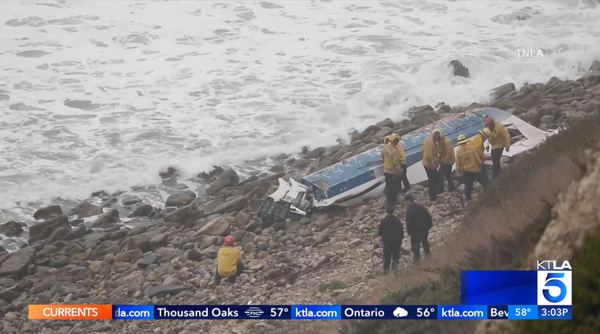
The United States’ decision to sell nuclear-powered submarines to Australia is coming under fire from some experts on nuclear nonproliferation. These critics fear that sharing the sensitive nuclear reactor technology needed to propel such vessels will set a dangerous precedent and open a new pathway for states to acquire nuclear weapons.
These concerns are overblown. Furthermore, they are outweighed by the clear security benefits of the deal—in particular, the fact that the sale will enhance Washington’s ability to counter Beijing both militarily and politically. There are significant military advantages to deploying nuclear-powered submarines, as opposed to the conventionally powered submarines Canberra had originally agreed to buy from France. The United States also has a number of ways to manage any proliferation risks, and it likely will do so in the coming months and years as the sale is finalized. If anything, partnering closely with Australia should help reduce one of the potential causes of future nuclear proliferation in Asia: the perception that the United States cannot or will not defend its allies from China.
SALE AWAY
In military terms, selling nuclear-powered submarines to Australia is a no-brainer. Because they have essentially unlimited power from their reactors, U.S. nuclear submarines are capable of greater speed, endurance, and range than their conventional counterparts—important characteristics when operating in the vast Indo-Pacific theater. Nuclear-powered submarines can also be designed to remain stealthy at high speeds and to operate at great ocean depths. This means that nuclear-powered submarines have a better chance at surviving Chinese attempts to find them.
As a result, nuclear-powered submarines are more likely to be able to sustain their missions during a crisis or a war. These include surveillance as well as protecting or attacking ships. Such undersea tasks will be especially vital in the future, as the surface of the ocean and the airspace above it grow increasingly contested due to technological trends in weaponry and the prodigious growth of China’s capabilities.
Beijing’s military expansion includes an ever-larger force of attack submarines, but the undersea domain is one in which the United States retains important qualitative advantages. Australia’s recognition of these advantages is an obvious motive for its sudden embrace of naval reactor technology as part of its new security partnership with the United Kingdom and the United States, known as AUKUS. This move would have been inconceivable only a few years ago, prior to Beijing’s blistering rhetoric toward Canberra, tariffs on major Australian exports, and suspension of key bilateral communication channels.
In military terms, selling nuclear-powered submarines to Australia is a no-brainer.
Critics of the submarine deal fear that allowing Australia to use naval nuclear propulsion technology will open a new pathway to nuclear proliferation. The main concern is that potential nuclear aspirants—not Australia, but states such as Iran, Saudi Arabia, and South Korea—might argue that they too should be able to build naval nuclear reactors. This would be technically allowed thanks to a loophole in the Nuclear Nonproliferation Treaty (NPT), which permits these states to remove nuclear materials from the safeguards regime of the International Atomic Energy Agency (IAEA) for this purpose. The fear is that those countries, having obtained reactor fuel on the pretext that they would use it solely to power submarines, might then turn around and use the fuel to make a nuclear bomb. Submarines fueled with highly enriched uranium (HEU) are particularly concerning because this material could be used to make nuclear weapons without further modifications.
Yet history does not support these doomsday scenarios. As the political scientist Nicholas Miller has pointed out, past exceptions to U.S. nonproliferation policy do not seem to have undermined the overall regime. He notes, for example, that the United States’ decision to waive sanctions on Pakistan as it pursued nuclear weapons in the 1980s did not lead any other countries to conclude that they suddenly had a free pass to go nuclear without consequences. Similarly, the 2008 U.S.-India nuclear deal, although criticized for seeming to bless India’s nuclear status despite its refusal to sign the NPT, did not result in subsequent proliferation by other states. These rare exceptions to nonproliferation policy seem to be understood as just that—exceptions. There is little reason to think the sale to Australia will be viewed otherwise.
Regardless, today’s nonproliferation regime has much bigger problems than the sale of nuclear-powered submarines to Australia. The collapsed Iran nuclear deal, the fraying U.S.-Russian strategic arms control framework, and China’s rapid buildup of new nuclear forces all pose profound challenges to efforts to reduce the spread of nuclear weapons, with or without a perceived weakening of the rules surrounding naval nuclear reactors. Overall, it makes little sense to undermine a new agreement with clear security benefits for Washington in order to prevent unspecified future damage to a set of reactor rules.
BELOW THE SURFACE OF AUKUS
The United States has a substantial ability to manage proliferation risks from the sale. When announcing the agreement, President Joe Biden highlighted proliferation safeguards as a major area of focus as the two countries hammer out the details over the next 18 months. Choices about reactor design, the process for shipbuilding, and other features of the submarines all provide opportunities to minimize any dangers.
In particular, it seems likely that the United States will draw from its own stock of HEU to produce the entire reactor core domestically. Then the United States will ship the sealed core to Australia, where it will be put into submarines. Opening the reactor to access the fuel would be extremely difficult physically and time consuming, not to mention suicidal, since anyone doing so would be exposed to unshielded, highly radioactive nuclear material.
In practical terms, what this means is that the deal will not give Australia the ability to produce HEU or provide it with an opportunity to somehow divert the fuel it gets from the United States. It also means that no HEU will be removed from international safeguards: the stockpile of the United States, as one of the NPT’s five nuclear weapons states, is under no such regime. It is true that Australia would be the first nonnuclear weapons state to acquire naval nuclear reactors fueled by HEU, but rather than giving a free pass to future nuclear aspirants, the circumstances seem to set a very narrow precedent.
Moreover, as the nuclear policy expert James Acton has pointed out, the United States could deliberately seek to constrain this precedent by publicly outlining the conditions under which it would view as acceptable any future efforts by nonnuclear weapons states to remove nuclear material from international safeguards for use in a naval nuclear reactor. Iran, for example, would not meet these criteria due to its previous violations of IAEA safeguards. Its record looks very different from that of Australia, a staunch supporter of the NPT.
The AUKUS submarine deal is probably more likely to reduce proliferation risks in the Indo-Pacific than increase them.
Acton and other critics of AUKUS, including former NATO Deputy Secretary General Rose Gottemoeller, have also suggested that the United States should encourage Australia to buy French nuclear-powered submarines that run on low-enriched uranium (LEU) instead of American HEU-fueled submarines. LEU poses a lower proliferation risk because it is unsuitable for direct use in nuclear weapons. Numerous nonnuclear weapons states also already possess LEU stockpiles, meaning there would be nothing new about Australia’s use of this technology. And by bringing France into AUKUS, these critics argue that the United States could also heal the rift that the deal has caused within NATO.
The transatlantic rift is real, so this idea is worth studying. Yet there are two problems with it. First, from a proliferation perspective, it is not actually clear that giving a greenlight to LEU-fueled naval propulsion is really that much better in the hands of a determined proliferator. LEU reactors have to be regularly refueled, which provides a pretext for states to develop indigenous enrichment capabilities to generate the needed fuel. Once a state can produce LEU, it is relatively straightforward to further enrich it into the HEU needed for a bomb. At least with HEU naval propulsion, the reactor core is inserted and sealed for the decades-long life of the ship, providing no rationale for ongoing enrichment.
Second, U.S.-designed nuclear submarines are superior in performance to their French counterparts. They are significantly larger and carry more weapons. And just as important, U.S. nuclear submarines have a sensor suite of advanced hull-mounted and towed arrays that dramatically improve their capabilities. Access to these sensors—and to continuous software upgrades for them over time by U.S. labs and industry—is part of what Australia is acquiring through the deal. France simply cannot provide this capability. No doubt this is part of what motivated Australia to form the deal with the Americans in the first place.
On balance, the AUKUS submarine deal is probably more likely to reduce proliferation risks in the Indo-Pacific than increase them. The most likely cause of future nuclear proliferation in the region stems from growing anxiety among U.S. allies that they have to counter China on their own and that their conventional defenses won’t suffice, thus leading them to provide for their own security with nuclear weapons. The submarine deal with Australia helps assuage these fears by signaling the United States’ political commitment to the region and bolstering a critical conventional military capability. It is important not to overstate the benefits of the agreement, but they seem more certain than its potential drawbacks.







